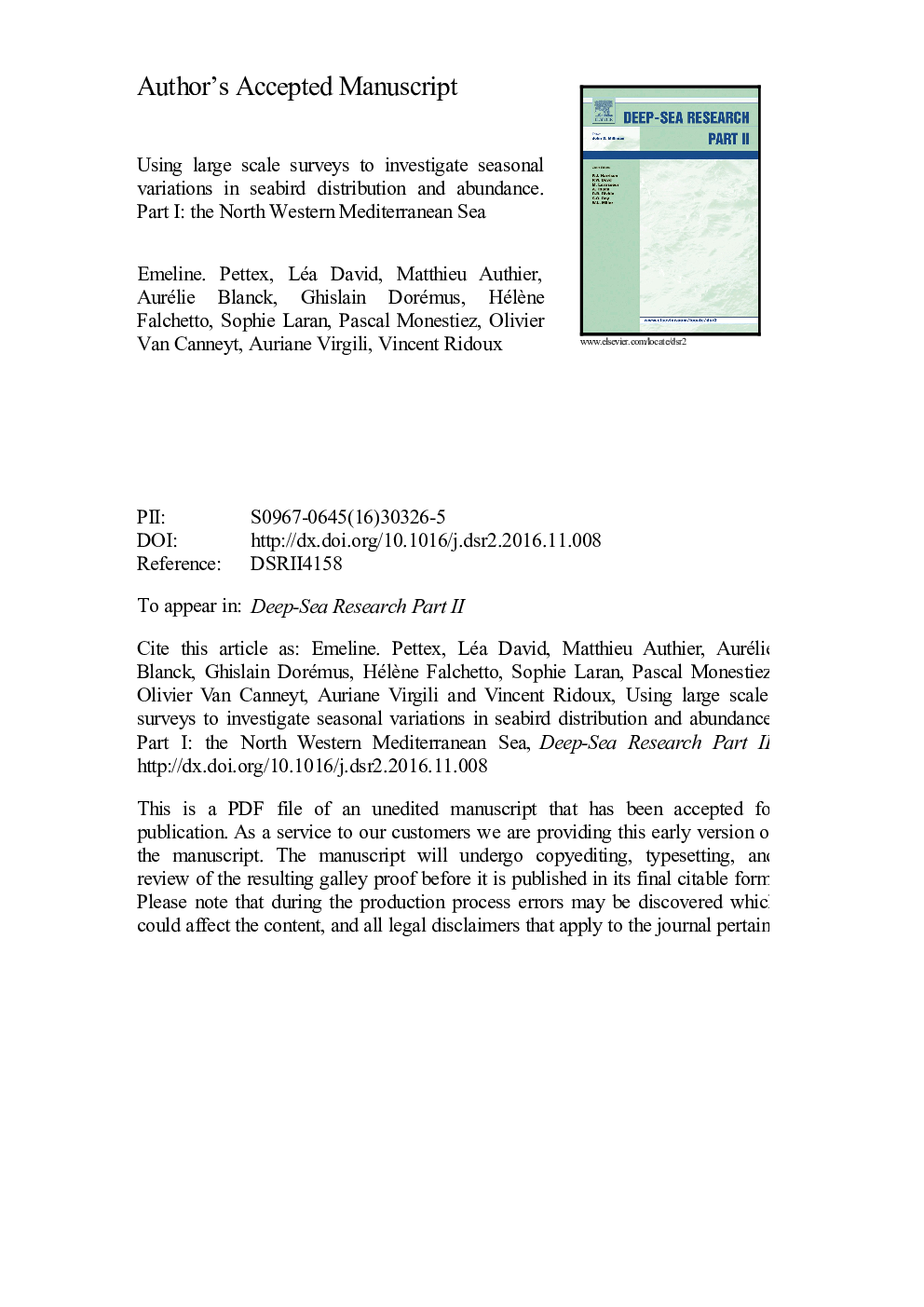| Article ID | Journal | Published Year | Pages | File Type |
|---|---|---|---|---|
| 5764922 | Deep Sea Research Part II: Topical Studies in Oceanography | 2017 | 28 Pages |
Abstract
Scientific investigation in offshore areas are logistically challenging and expensive, therefore the available knowledge on seabird at sea distribution and abundance, as well as their seasonal variations, remains limited. To investigate the seasonal variability in seabird distribution and abundance in the North-Western Mediterranean Sea (NWMS), we conducted two large-scale aerial surveys in winter 2011-12 and summer 2012, covering a 181,400Â km2 area. Following a strip-transect method, observers recorded a total of 4141 seabird sightings in winter and 2334 in summer, along 32,213Â km. Using geostatistical methods, we generated sightings density maps for both seasons, as well as estimates of density and abundance. Most taxa showed seasonal variations in their density and distribution patterns, as they used the area either for wintering or for breeding. Highest densities of seabirds were recorded during winter, although large-sized shearwaters, storm petrels and terns were more abundant during summer. Consequently, with nearly 170,000 seabirds estimated in winter, the total abundance was twice higher in winter. Coastal waters of the continental shelf were generally more exploited by seabirds, even though some species, such as Mediterranean gulls, black-headed gulls, little gulls and storm petrels were found at high densities in highly offshore waters. Our results revealed areas highly exploited by the seabird community in the NWMS, such as the Gulf of Lion, the Tuscan region, and the area between Corsica and Sardinia. In addition, these large-scale surveys provide a baseline for the monitoring of seabird at sea distribution, and could inform the EU Marine Strategy Framework Directive.
Related Topics
Physical Sciences and Engineering
Earth and Planetary Sciences
Geology
Authors
Emeline Pettex, Léa David, Matthieu Authier, Aurélie Blanck, Ghislain Dorémus, Hélène Falchetto, Sophie Laran, Pascal Monestiez, Olivier Van Canneyt, Auriane Virgili, Vincent Ridoux,
